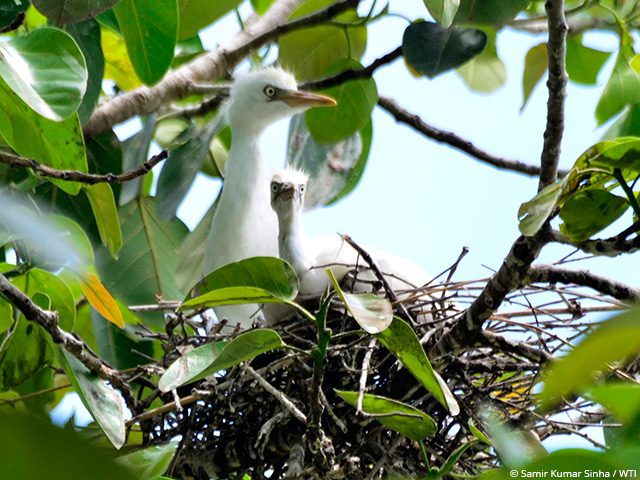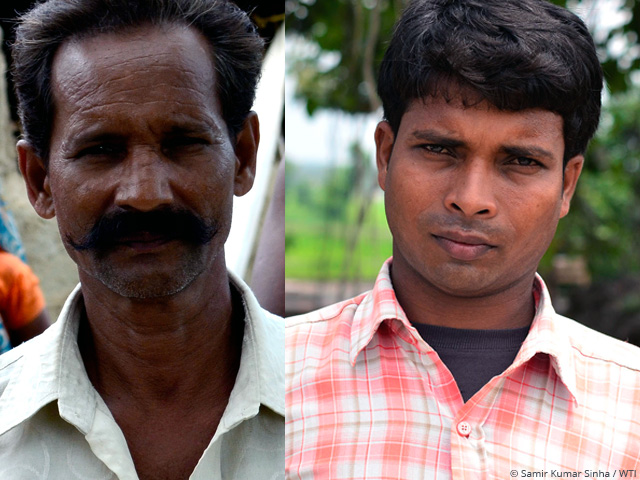29
Nov
Villagers and Sarus Protection Committee Members Apprehend, Hand Over Bird Poachers to UP Forest Department
0 Comment
Maharajganj, Uttar Pradesh, August 24, 2016: The villagers and Sarus Protection Committee (SPC) members of Bali village, Uttarauli Panchayat recently set an example in community bird protection by capturing two poachers from their own village and handing them over to the forest department for legal action.
A cattle egret and its chick in their nest on the Banyan tree in village Bali
The village, located in the Maharajganj district of eastern Uttar Pradesh, has about 200 households. It also has a large banyan tree which, for the last three to four years, has hosted a heronry of about 50 cattle egret pairs and their nests. On August 9 two poachers trapped and killed seven egret chicks; they were caught in the act by Rajendra, also a native of Bali, who informed Jeetendra, Secretary of the village SPC. Both offenders were handed over to the Madhwalia Forest Range Office with the help of villagers and Wildlife Trust of India volunteers. Daya Shankar Tiwari, the Range Officer of Madhwalia, was extremely appreciative of the assistance provided to the UP Forest Department: “The SPC and villagers of Bali have done a commendable job by catching these poachers and showing their concern towards protection of birds”, he said.
Rajendra (left), the Bali villager who caught the poachers, and Jeetendra, the Secretary of the village Sarus Protection Committee
Wildlife Trust of India has constituted 20 SPCs in villages adjoining important sarus crane wetlands across 10 districts of eastern Uttar Pradesh, as part of a Sarus Crane Conservation Project supported by Tata Trusts. Each SPC has been provided with a digital camera, a pair of binoculars and a field guide on birds. “The Bali village SPC was constituted in 2014 and protects the nearby Baisar wetlands”, said Arshad Hussain, WTI Assistant Manager and the project’s point person.
“Sarus Protection Committees are a means of institutionalising the protection of sarus cranes and other birds, and wetlands by local communities”, declared WTI’s Samir Kumar Sinha, who heads the conservation project. “Committee members also help in monitoring the population of sarus cranes, protecting nests, and creating awareness about conservation in their villages. They are given periodic training in these activities as well as in leadership and institution building”, he added.











